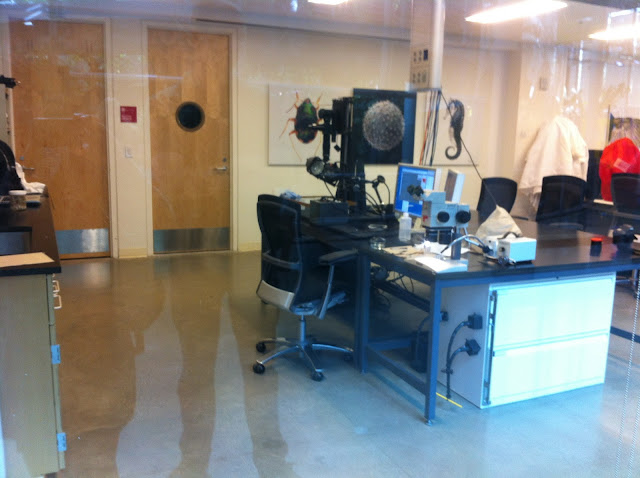It's Saturday August 25th at 6am and my partner Todd and I headed to Woodland to pick up the half ton of fruit we bought. We arrive at the vineyard a little after sunrise.
It's finally happening. My 6th Harvest will finally be my own wine. Several months of planning and plan changing are converging in Woodland. Originally Todd and I looked at Custom Crush facilities, but they were cost prohibitive and more importantly would not allow us to do our own work (for legal reasons). To get the most out of the experience and be financially prudent we decided to forgo professional places and make the wine at home. Old school.
Woodland is a warmer climate than Napa, and white wine grapes tend to be ready to pick before red wine grapes and we are doing this project in addition to our real jobs, so we had to pick this weekend.
Here the vineyard manager is hosing off the half ton bin that we are borrowing to haul our fruit back to Napa.
Two guys started hand picking the 0.25 tons of Viogner and 0.25 tons of Marsanne at 5am. Which is actually a late start, but that's all they were picking this morning. Depending on how much there is to pick crews can start as early as 3am to be done by late morning. You don't want to pick when the day starts to get hot. You want to keep the fruit as cool as possible as it is coming in.
The guys harvest the clusters in the small bins.
Then a tractor with a flat bed passes through the rows to collect the bins.
The tractor drives up to Todd's truck and we all dump the small bins into the white half ton bin.
By 7:30am we are leaving the Woodland vineyard and headed back to Napa.
At 8:30am we had the truck and the fruit back at my house!
If we had arrived at a winery a forklift would have taken the bin from the truck to the destemmer.
But since this is home winemaking and resources are limited and we are working on a micro scale, instead of forklift removing the fruit my sister helped us move fist fulls of clusters into buckets and then the buckets to the destemmer.
We have turned my garage into our humble winery. We borrowed a basket press, destemmer (on top of the barrels) and two half ton bins. So far we have bought the fruit and 3 neutral white french oak barrels from another winery as well as a barrel rack (pictured). We will probably also need to buy an AC unit to keep the garage cold once the fermentation begins.
It took us 3 hours to hand feed all the fruit into the destemmer. Todd slipped in the clusters while I cranked the gears. For. Three. Hours. A real winery has a motor running the destemmer. It wouldn't normally take so long for half a ton of fruit but we didn't want to crush the berries before destemming them, so we had to slip each cluster below the rollers and that really slowed the process.
We wanted as many whole berries as possible to make it through to the bin because crushing the berries releases more juice and more opportunity for microbial activity. Then we added dry ice we bought at the grocery store to keep the fruit cold during the next 24 hours of skin contact and covered it with a plastic tarp.
Temperature control is probably a home winemakers bigest challenge. We want to fruit to remain as cold as possible so we can extract phenolics from the skins but not start to ferment and discourage other microbes from spoiling our grapes. Wineries usually add sulfur to the fruit at this point to prevent microbial activity, but we didn't have any, so that's that.
-Lucia









































